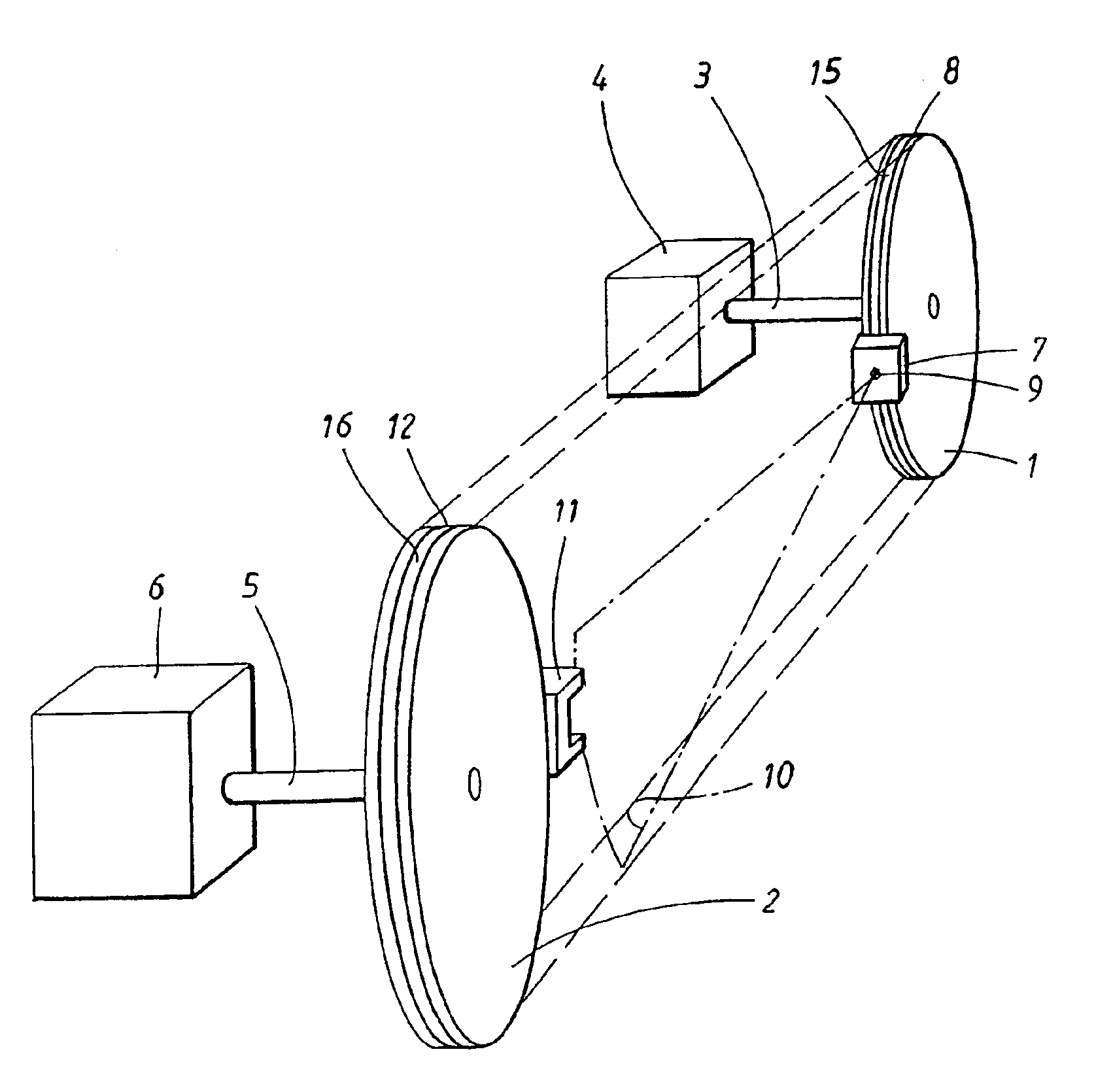Device and procedure for aligning of components
a technology for components and devices, applied in the direction of surveying and navigation, gearing control, instruments, etc., can solve the problems of unnecessarily high wear and tear of belts and belt discs, unnecessarily high power consumption, and reduce the degree of efficiency of the machines for which belt discs are used
- Summary
- Abstract
- Description
- Claims
- Application Information
AI Technical Summary
Benefits of technology
Problems solved by technology
Method used
Image
Examples
Embodiment Construction
[0027]In FIG. 1 a perspective view of a device according to the present invention is shown. The invention is in particular, but not exclusively, intended to be used at alignment of two power transmitting belt discs 1, 2 in relation to each other, i.e. positioning them along an imaginary common plane, in what way twist, angular and parallel errors between the belt discs 1, 2 are reduced or preferably totally eliminated.
[0028]The invention is suitable to be used at the type of alignment of two components in relation to each other where there is a desire to position these two components along a common plane. In particular, the invention may be used at applications that comprise power transmission by means of rotating transmission devices, for example of the type chain propulsion or belt propulsion, and may then be used e.g. in connection with fan systems or machines.
[0029]The invention will in the following be described with reference to FIGS. 1 and 2, which show an embodiment comprisi...
PUM
 Login to View More
Login to View More Abstract
Description
Claims
Application Information
 Login to View More
Login to View More - R&D
- Intellectual Property
- Life Sciences
- Materials
- Tech Scout
- Unparalleled Data Quality
- Higher Quality Content
- 60% Fewer Hallucinations
Browse by: Latest US Patents, China's latest patents, Technical Efficacy Thesaurus, Application Domain, Technology Topic, Popular Technical Reports.
© 2025 PatSnap. All rights reserved.Legal|Privacy policy|Modern Slavery Act Transparency Statement|Sitemap|About US| Contact US: help@patsnap.com



